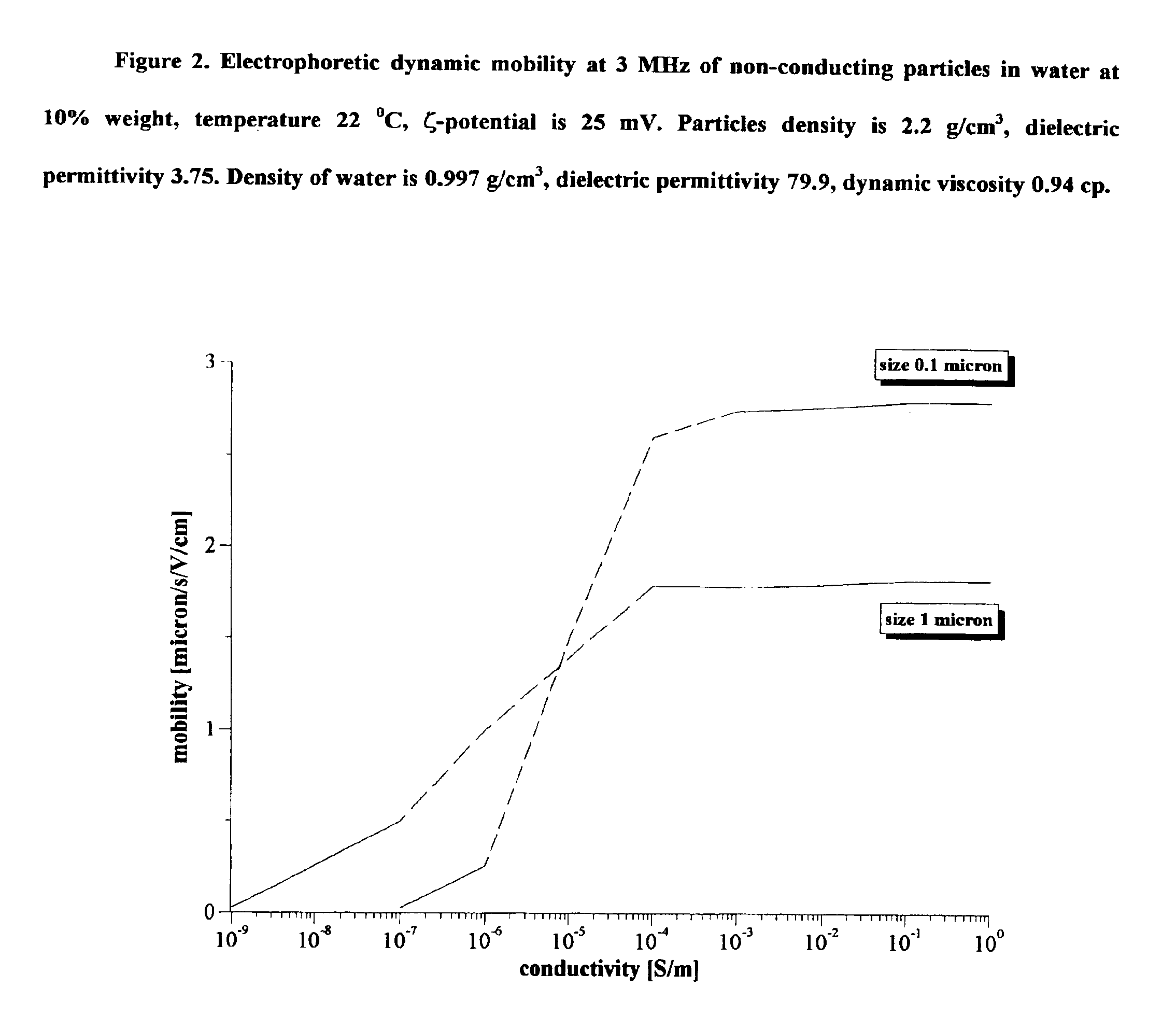Method for determining electric properties of particles in liquids by means of combined electroacoustic and complex conductivity measurement
a technology of complex conductivity and electric properties, applied in chemical methods analysis, instruments, material analysis, etc., can solve problems such as re-examining the relationship between electroacoustic and conductivity measuremen
- Summary
- Abstract
- Description
- Claims
- Application Information
AI Technical Summary
Benefits of technology
Problems solved by technology
Method used
Image
Examples
Embodiment Construction
[0033]Characterization of ζ-potential includes two steps: measurement and interpretation. This invention does not relate to the measurement part. We assume that there are commercially available instruments for measuring the Electroacoustic signal in either mode and for measuring the Complex Conductivity as well. This invention targets the interpretation part, where we calculate the ζ-potential from the measured raw data.
[0034]We start by presenting the theory of the Electroacoustic effect. We will do it separately for a “thin double layer” and then a “thick double layer”. The double layer thickness, κ−1, with respect to the particle radius, a, is an important parameter reflecting the influence of conductivity on the electric surface properties. The double layer thickness is related to the properties of the solution according to the formula: κ=ⅇ2∑iziv2niɛ kT(2)
[0035]where: e is an electron charge; k is the Boltzman constant, T is the absolute temperature; ni, and zi are the nume...
PUM
| Property | Measurement | Unit |
|---|---|---|
| particle size | aaaaa | aaaaa |
| density | aaaaa | aaaaa |
| density | aaaaa | aaaaa |
Abstract
Description
Claims
Application Information
 Login to View More
Login to View More - R&D
- Intellectual Property
- Life Sciences
- Materials
- Tech Scout
- Unparalleled Data Quality
- Higher Quality Content
- 60% Fewer Hallucinations
Browse by: Latest US Patents, China's latest patents, Technical Efficacy Thesaurus, Application Domain, Technology Topic, Popular Technical Reports.
© 2025 PatSnap. All rights reserved.Legal|Privacy policy|Modern Slavery Act Transparency Statement|Sitemap|About US| Contact US: help@patsnap.com



